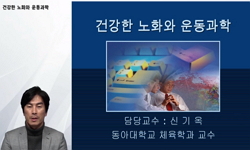Background: Nowadays, decreased physical activity is considered to be a contributor to increase the prevalence of many diseases such as obesity, coronary heart disease and so on. Many researches demonstrated that regular physical activity reduce all c...
http://chineseinput.net/에서 pinyin(병음)방식으로 중국어를 변환할 수 있습니다.
변환된 중국어를 복사하여 사용하시면 됩니다.
- 中文 을 입력하시려면 zhongwen을 입력하시고 space를누르시면됩니다.
- 北京 을 입력하시려면 beijing을 입력하시고 space를 누르시면 됩니다.


가스분석 결과를 기준으로 동작감지기 엑티칼, 엑티그라프의 타당도 = The Accuracy of the Accelerometers (Actical and Actigraph) among Korean People
한글로보기부가정보
다국어 초록 (Multilingual Abstract)
Methods: Thirty volunteers from the community, ages over 20 yrs, were recruited. The participants put on the two accelerometers (Actical, Actigraph) on the waists, secured with elastic belts, and performed a session of rest and three structured activities (two walking speeds, 4 km/hr and 6 km/hr, and one jogging speed, 8 km/hr). During each activity, expired respiratory gases were collected, and oxygen consumption (VO2) was measured by indirect calorimetry (Model Quark β2Ⓡ). The calories measured by gas analyzer and two accelerometers were compared by correlation analysis using SPSS program.
Results: Pearson correlation coefficient between gas analyzer and two accelerometers was calculated at three structured activities. The r in Actical was 0.747, 0.785, and 0.677, at speed of 4, 6, 8 km/hr, respectively (P<0.05), and the same measures in Actigraph was 0.617, 0.737, and 0.530 (P<0.05), respectively. Pearson correlation coefficient was also calculated between the two accelerometers, and the r was 0.881, 0.927, and 0.824, at each speed.
Conclusion: The Actical and Actigraph are valid tools for measuring physical activities in Korean people. (
Background: Nowadays, decreased physical activity is considered to be a contributor to increase the prevalence of many diseases such as obesity, coronary heart disease and so on. Many researches demonstrated that regular physical activity reduce all cause mortality. To increase the physical activities of the population, accurate estimation of the activities is needed. Actical and actigraph are confirmed as accurate tools to measure physical activities. But the target populations of the validity studies were not Asian people. Therefore, the accuracy of the accelerometers should be confirmed in Asian people. The accuracy of the tools could be different. Therefore head to head comparison study between the tools would be needed.
Methods: Thirty volunteers from the community, ages over 20 yrs, were recruited. The participants put on the two accelerometers (Actical, Actigraph) on the waists, secured with elastic belts, and performed a session of rest and three structured activities (two walking speeds, 4 km/hr and 6 km/hr, and one jogging speed, 8 km/hr). During each activity, expired respiratory gases were collected, and oxygen consumption (VO2) was measured by indirect calorimetry (Model Quark β2Ⓡ). The calories measured by gas analyzer and two accelerometers were compared by correlation analysis using SPSS program.
Results: Pearson correlation coefficient between gas analyzer and two accelerometers was calculated at three structured activities. The r in Actical was 0.747, 0.785, and 0.677, at speed of 4, 6, 8 km/hr, respectively (P<0.05), and the same measures in Actigraph was 0.617, 0.737, and 0.530 (P<0.05), respectively. Pearson correlation coefficient was also calculated between the two accelerometers, and the r was 0.881, 0.927, and 0.824, at each speed.
Conclusion: The Actical and Actigraph are valid tools for measuring physical activities in Korean people. (
국문 초록 (Abstract)
방법: 건강한 20세 이상의 성인 지원자를 대상으로 하였다. 참가자들은 허리에 두 개의 동작감지기(엑티칼, 엑티그라프)를 착용한 상태에서, 2단계의 보행속도의 신체활동(4 km/hr, 6 km/hr)과, 조깅속도의 신체활동(8 km/hr)을 수행하였다. 일련의 신체활동을 하는 동안 가스분석기를 통해 산소소모량을 측정하여 소모된 칼로리를 계산하였다. 가스분석기와 두 개의 동작감지기로 측정된 칼로리의 상관계수를 구하여, 각각의 타당도를 평가하였고, 두 동작감지기간 측정값의 차이를 살펴보았다.
결과: 본 연구에서 사용된 두 가지 동작감지기에서 측정된 칼로리와 가스분석기를 통해 측정된 칼로리 사이의 피어슨 상관계수를 구하였다. 그 결과 4 km/hr, 6 km/hr, 8 km/hr의 신체활동 단계별 r값은 각각 엑티칼에서 0.747, 0.785, 0.677로, 엑티그라프에서 0.617, 0.737, 0.530으로 통계적으로 유의한 상관관계를 보였으며, 두 기구간의 측정값 사이에도 그 값이 0.881, 0.927, 0.824로 통계적으로 유의한 상관관계를 보였다.
결론: 본 연구에서 사용된 3차원 동작감지기(엑티칼, 엑티그라프)는 우리나라 성인에서 신체활동량을 평가하기 위한 도구로서 유용하다.
연구배경: 신체 활동이 적음은 비만, 심혈관계 질환 등 많은 질병의 위험인자로 대두되고 있고, 규칙적인 신체활동은 모든 원인의 사망률을 감소시킨다는 연구결과가 있다. 따라서 질병예방...
연구배경: 신체 활동이 적음은 비만, 심혈관계 질환 등 많은 질병의 위험인자로 대두되고 있고, 규칙적인 신체활동은 모든 원인의 사망률을 감소시킨다는 연구결과가 있다. 따라서 질병예방과 건강증진을 위하여 신체활동을 권고할 필요가 있고, 이를 위해서는 신체활동량을 정확하게 측정하고 평가할 수 있는 방법이 필요하다. 서구의 연구에서 엑티칼Ⓡ(Mini Mitter company, USA)과 엑티그라프Ⓡ (LLC, USA)는 정확한 신체활동량 측정이 가능한 기구로 평가되고 있지만, 동양인을 대상으로 두 기구의 타당도를 살펴 본 연구는 없다. 따라서 우리나라 성인에서 두 동작감지기의 정확도를 확인하고, 두 기구간의 차이를 평가할 필요가 있다.
방법: 건강한 20세 이상의 성인 지원자를 대상으로 하였다. 참가자들은 허리에 두 개의 동작감지기(엑티칼, 엑티그라프)를 착용한 상태에서, 2단계의 보행속도의 신체활동(4 km/hr, 6 km/hr)과, 조깅속도의 신체활동(8 km/hr)을 수행하였다. 일련의 신체활동을 하는 동안 가스분석기를 통해 산소소모량을 측정하여 소모된 칼로리를 계산하였다. 가스분석기와 두 개의 동작감지기로 측정된 칼로리의 상관계수를 구하여, 각각의 타당도를 평가하였고, 두 동작감지기간 측정값의 차이를 살펴보았다.
결과: 본 연구에서 사용된 두 가지 동작감지기에서 측정된 칼로리와 가스분석기를 통해 측정된 칼로리 사이의 피어슨 상관계수를 구하였다. 그 결과 4 km/hr, 6 km/hr, 8 km/hr의 신체활동 단계별 r값은 각각 엑티칼에서 0.747, 0.785, 0.677로, 엑티그라프에서 0.617, 0.737, 0.530으로 통계적으로 유의한 상관관계를 보였으며, 두 기구간의 측정값 사이에도 그 값이 0.881, 0.927, 0.824로 통계적으로 유의한 상관관계를 보였다.
결론: 본 연구에서 사용된 3차원 동작감지기(엑티칼, 엑티그라프)는 우리나라 성인에서 신체활동량을 평가하기 위한 도구로서 유용하다.
참고문헌 (Reference)
1 신호철, "신체활동을 측정해야 하는 이유" 25 (25): S376-S379, 2004
2 양윤준, "신체활동 측정방법에는 어떤 방법이 있는가?" 25 (25): S380-S382, 2004
3 Hendelman D, "Validity of accelerometry for the assessment of moderate intensity physical activity in the field" 32 (32): 442-449, 2000
4 Pasternak RC, "Report of the Adult Treatment Panel III: the 2001 National Cholesterol Education Program guidelines on the detection, evaluation and treatment of elevated cholesterol in adults" 21 (21): 393-398, 2003
5 Heil DP, "Predicting activity energy expenditure using the Actical activity monitor" 77 : 64-80, 2006
6 Fagard RH, "Physical activity, physical fitness and the incidence of hypertension" 23 (23): 265-267, 2005
7 Casperson CJ, "Physical activity, exercise and physical fitness: definitions and distinctions for health-related research" 100 : 126-131, 1985
8 Helmrich SP, "Physical activity and reduced occurrence of non-insulin- dependent diabetes mellitus" 325 : 147-152, 1991
9 Pate RR, "Physical activity and public health. A recommendation from the center for Disease and Prevention and the American College of Sports Medicine" 273 : 402-407, 1995
10 Reaven G, "Insulin resistance, hypertension, and coronary heart disease" 5 (5): 269-274, 2003
1 신호철, "신체활동을 측정해야 하는 이유" 25 (25): S376-S379, 2004
2 양윤준, "신체활동 측정방법에는 어떤 방법이 있는가?" 25 (25): S380-S382, 2004
3 Hendelman D, "Validity of accelerometry for the assessment of moderate intensity physical activity in the field" 32 (32): 442-449, 2000
4 Pasternak RC, "Report of the Adult Treatment Panel III: the 2001 National Cholesterol Education Program guidelines on the detection, evaluation and treatment of elevated cholesterol in adults" 21 (21): 393-398, 2003
5 Heil DP, "Predicting activity energy expenditure using the Actical activity monitor" 77 : 64-80, 2006
6 Fagard RH, "Physical activity, physical fitness and the incidence of hypertension" 23 (23): 265-267, 2005
7 Casperson CJ, "Physical activity, exercise and physical fitness: definitions and distinctions for health-related research" 100 : 126-131, 1985
8 Helmrich SP, "Physical activity and reduced occurrence of non-insulin- dependent diabetes mellitus" 325 : 147-152, 1991
9 Pate RR, "Physical activity and public health. A recommendation from the center for Disease and Prevention and the American College of Sports Medicine" 273 : 402-407, 1995
10 Reaven G, "Insulin resistance, hypertension, and coronary heart disease" 5 (5): 269-274, 2003
11 American College of Sports Medicine, "Guidelines for exercise testing and prescription" Lea & Febiger 95-96, 1991
12 Drinkwater BL, "Exercise and bones. Lessons learned from female athletes" 24 (24): 33-35, 1996
13 Swartz AM, "Estimation of energy expenditure using CSA accelerometers at hip and wrist sites" 32 (32): 450-456, 2000
14 Crouber SE, "Estimating energy expenditure using accelerometers" 98 : 601-612, 2006
15 Rosenthal M, "Demonstration of a relationship between level of physical training and insulin stimulated utilization in normal humans" 32 : 408-411, 1983
16 Paul DR, "Comparison of two different physical activity monitors" 7 : 26-, 2007
17 National Institutes of Health, National Heart, Lung, and Blood Institute, "Clinical guidelines on the identification, evaluation, and treatment of overweight and obesity in adults--the evidence report" 6 (6): 51-209, 1998
18 Lee CD, "Cardiorespiratory fitness, body composition and all-cause and cardiovascular disease mortality in men" 69 : 373-380, 1999
19 Freedson PS, "Calibration of the computer science and application, Inc. accelerometer" 30 : 777-781, 1998
20 Dipietro L, "A survey for assessing physical activity among older adults" 25 (25): 628-642, 1993
21 Berlin JA, "A meta-analysis of physical activity in the prevention of coronary heart disease" 132 : 612-628, 1990
22 김윤희, "1차 진료 영역에서 신체 활동량 측정 방법 연구" 15 (15): 132-141, 1994
동일학술지(권/호) 다른 논문
-
- 대한가정의학회
- 이성훈
- 2008
- KCI등재,SCOPUS
-
- 대한가정의학회
- 손보드리
- 2008
- KCI등재,SCOPUS
-
- 대한가정의학회
- 최진욱
- 2008
- KCI등재,SCOPUS
-
한국인 성인의 당뇨병 어떻게 관리되고 있을까?-미국당뇨병학회 권고 목표치를 기준으로-
- 대한가정의학회
- 이지은
- 2008
- KCI등재,SCOPUS
분석정보
인용정보 인용지수 설명보기
학술지 이력
| 연월일 | 이력구분 | 이력상세 | 등재구분 |
|---|---|---|---|
| 2023 | 평가예정 | 해외DB학술지평가 신청대상 (해외등재 학술지 평가) | |
| 2020-01-01 | 평가 | 등재학술지 유지 (해외등재 학술지 평가) |  |
| 2012-09-25 | 학술지명변경 | 한글명 : 가정의학회지 -> Korean Journal of Family Medicine |  |
| 2011-01-01 | 평가 | 등재학술지 유지 (등재유지) |  |
| 2009-01-01 | 평가 | 등재학술지 유지 (등재유지) |  |
| 2008-12-29 | 학술지명변경 | 외국어명 : The Journal of the Korean Academy of Family Medicine -> Korean Journal of Family Medicine |  |
| 2007-01-01 | 평가 | 등재학술지 유지 (등재유지) |  |
| 2004-01-01 | 평가 | 등재학술지 선정 (등재후보2차) |  |
| 2003-01-01 | 평가 | 등재후보 1차 PASS (등재후보1차) |  |
| 2002-01-01 | 평가 | 등재후보 1차 FAIL (등재후보1차) |  |
| 1999-07-01 | 평가 | 등재후보학술지 선정 (신규평가) |  |
학술지 인용정보
| 기준연도 | WOS-KCI 통합IF(2년) | KCIF(2년) | KCIF(3년) |
|---|---|---|---|
| 2016 | 0.22 | 0.22 | 0.25 |
| KCIF(4년) | KCIF(5년) | 중심성지수(3년) | 즉시성지수 |
| 0.24 | 0.26 | 0.54 | 0.05 |




 KCI
KCI






